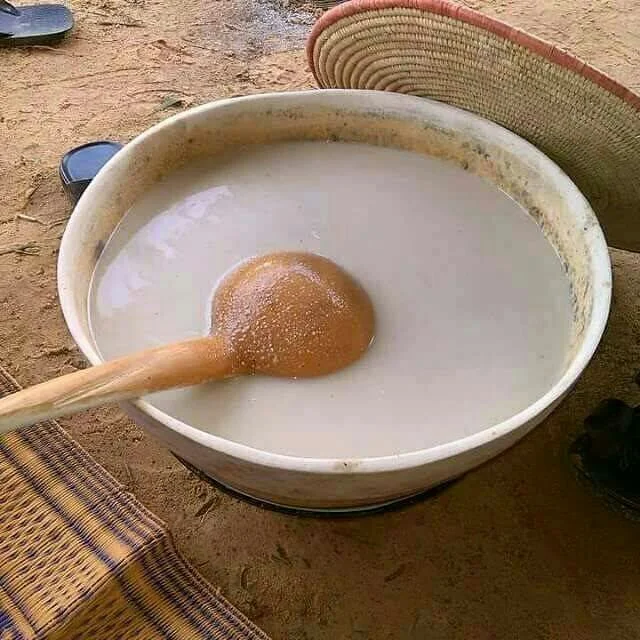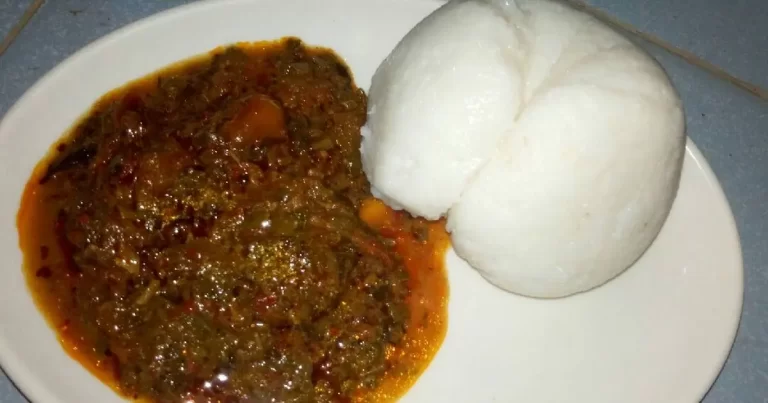Are you planning a visit to Nigeria? You should try the diverse Fulani cuisine.
The Fulani people are a pastoralist and nomadic community. Their diet is mostly composed of dairy products, meat, cereals, and grains. The following are some Fulani foods you should try on your visit to Nigeria.
1. Pulaku/Pulukunii (Fulani Milk Tea)
Pulaku is a warming and invigorating beverage made by brewing strong tea and combining it with cow or goat milk. It is typically spiced with aromatic ingredients like ginger, cloves, or even black pepper.
Fulani milk tea is enjoyed throughout the day and is a symbol of hospitality in Fulani culture.
2. Fura da Nono (Millet With Fermented Milk)
Fura da Nono is a millet snack mixed with fermented milk (nono). It is prepared using millet flour mixed with ginger, pepper, cloves, and other spices of choice. Water is added to the mixture a little at a time until a thick paste is formed.
The paste is then rolled into small balls, about the size of golf balls. The millet balls are boiled for about 30 minutes and pounded into a paste for an even texture before being rolled into balls again.
When serving, a few balls are put in a bowl, the fermented milk is added, and mashed to form a thick paste. Fura da Nono is a popular afternoon dish among the Fulani.

3. Tuwo Shinkafa
Tuwo shinkafa is a type of swallow (or fufu in Nigeria) made from rice. It is indigenous to the northern part of Nigeria, especially among the Fulani and Nigeria.
To prepare this dish, the Fulani people boil short-grained rice and then mash it with a wooden spoon until it forms a smooth dough. It is often taken with Miyan Taushe, a type of pumpkin soup popular among the Fulani, or any other kind of soup.
4. Lakh (Millet Porridge)
Lakh is a nourishing porridge made from millet, a staple grain in Fulani diets. It is cooked to a creamy consistency and offers sustenance and comfort.
Lakh is often eaten as a filling breakfast or a wholesome meal.
5. Fulbe Nunu (Fulani Cheese and Milk)
Fulbe Nunu is a traditional milk product that can resemble yogurt or kefir. It is enjoyed for its tangy flavor and probiotic benefits. Fulbe Nunu can be taken on its own or complemented with grains.
6. Waina/Masa (Rice Cake)
Waina, also called Masa, is a type of rice cake popular in the northern regions of Nigeria among the Fulani and Hausa people.
The dish is prepared from rice that has been broken down almost to the size of particles. The rice is soaked overnight, mixed with yeast, sugar, salt, and other ingredients and blended to a smooth paste before it is fried or baked.
The rice cake is often accompanied with a spicy sauce.
7. Fouti
Fouti is a spicy stew whose main ingredients are okra, garden eggs, eggplants, and locust beans. It is seasoned with hot pepper, dry pepper, salt, and other African spices.
The vegetables are first boiled to make them tender, mashed, and then seasoned. The mixture is then fried with palm oil until it becomes crispy.
Fouti is often served with rice.

8. Bouille (Thick Porridge)
Bouille is a hearty and satiating dish made from various grains including millet, maize, or rice that is prepared as a thick porridge.
It is often taken as a comfort food that provides energy and sustenance, especially during colder months.
9. Suya (Fulani Grilled Meat)
Suya is a delicious West African meat dish taken by the Fulani people. It is prepared from skewered and grilled meat, often beef or chicken.
Coated with a spicy peanut or groundnut marinade, it has a tantalizing blend of smoky, spicy, and nutty flavors.

10. Latchiri (Maize or Millet Couscous)
Latchiri is a type of couscous made from corn and often served with Kossan (curdled milk). The corn can be substituted with millet.
After the corn is grounded, it is mixed with water and put in a damp cloth before it is steamed for a few minutes.
The grounded corn is removed from the cloth and mixed with water until there are no lumps. The mixture is steamed for a second and third time.
Among the Fulani people, Latchiri Kossan is a prestigious dish often served in weddings, naming ceremonies, and other social events.
11. Mafé (Fulani Groundnut Soup)
Groundnut soup, also known as Mafé, features a delicious peanut-based sauce enriched with meat (chicken, beef, or goat) and vegetables.
The peanuts add a creamy texture and nutty flavor that blends harmoniously with the other ingredients.
Groundnut soup is often taken with rice or pounded yam.
12. Fulani Okra Soup
Okra is a slimy tasty stew made from fresh okra pods, tomatoes, and onions. It is often enriched with meat or seafood.
Aside from being delicious, this soup is nutritious. It is usually taken as a side of rice, couscous, or millet.
Exploring these foods will give you a deeper appreciation of the diverse culinary traditions within the Fulani culture. However, their preparation and availability might vary based on the Nigerian region you are exploring.

